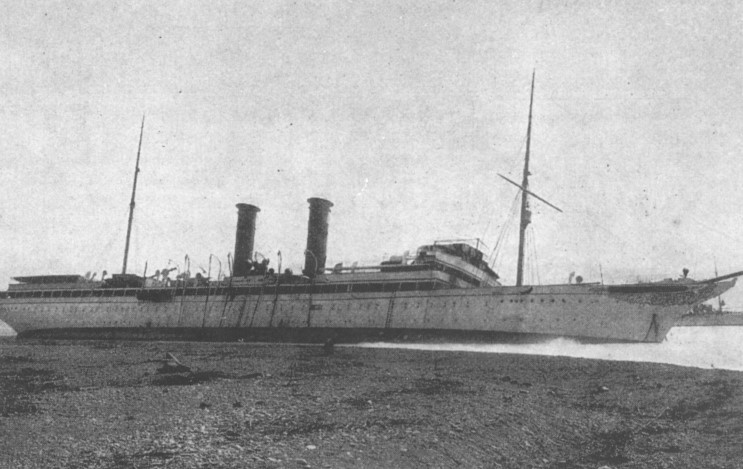With two high profile cruise ship incidents this year, albeit 100 years apart, attention naturally falls on the captains. Maritime tradition dictates that the master is the last to leave a stricken vessel, an edict reinforced by an age-old honour.
 |
|
Shame on you. Captain Francesco Schettino |
The celebrated captain of the Costa Concordia, Francesco Schettino, who forgot his glasses and steered his ships onto rocks then “fell” into a lifeboat as hundreds of his panicked passengers tried to abandon ship without a prior emergency drill, will be remembered as Cowardly Captain Catastrophe. Conversely, the 62-y-o Captain Edward Smith of the White Star Line knew he would never make it off the Titanic alive and died after supervising the evacuation, many say, as a chivalrous hero. But what of other famous captains of calamity? Could any rival these two for extreme contrast?
 |
| RMS Lusitania is torpedoed but Capt. Turner remains on the bridge |
No Reprieve: Even though Captain William Turner valiantly stayed at the helm as the torpedoed RMS Lusitania rapidly sank on 7 May 1915, he was admonished by the media for not going down with the other 1198 souls.
 |
| Captain Yiannis Avranas “You can stay if you want” |
Cowardice under fire: In 2005 I sailed aboard the icebreaker, Kapitan Khlebnikov, and struck up a conversation with one of the crew. She had abandoned ship twice in her short career, the first time being the famous MTS Oceanos, which sank after an engine room explosion off South Africa in 1991. Greek Captain Yiannis Avranas, scampered with his officers in a lifeboat leaving half the ship’s passengers to fend for themselves. The last passengers were saved by the band’s guitarist and a magician. At the subsequent inquiry, he famously stated, “When I give the order abandon ship, it doesn’t matter what time I leave. Abandon is for everybody. If some people want to stay, they can stay.” Avranas is still a captain today.
 |
| Captain William Knight. An inquiry did not blame him for the loss of SS Yongala |
Bad call skipper: Also 100 years ago, Australia’s Titanic, the SS Yongala, disappeared without trace in a cyclone. Should Captain William Knight have anchored in safety instead of the fateful decision to steam on to Townsville? Yep.
 |
| Captain Byron Voutsinas appeals to some higher power. |
Women and children last: In 1965, young Captain Byron Voutsinas was in command of the aging 5000 ton steamer, Yarmouth Castle. Voutsinas’s action in time of dire need is possibly the greatest act of maritime cowardice in recent times. A raging fire broke out while the stately old vessel was sailing from Miami to Nassau. Luckily rescue ships arrived on the scene quickly, but they first found Voutsinas, his officers and just four passengers in a half-full life boat. The remaining 370 passengers and 170 crew were fighting for their lives aboard the doomed vessel. While there later emerged many acts of bravery among his crew, there were no heroic citations for Voutsinas and his senior officers. The final death toll was 90 and new Safety Of Life At Sea (SOLAS) laws were enacted as a result.
 |
Prinzessin Victoria Luise prostrate on the rocks
|
Ultimate chivalry: The Germans take a dim view to captains who lose their ships, especially through negligence. The world’s first purpose-built cruise ship, the luxurious Prinzessin Victoria Luise, ran onto rocks near Kingston harbour in 1906 after the master, Captain Brunswig, misread a lighthouse beacon. All passengers were safely evacuated, but as an ultimate act of honour, Brunswig calmly retreated to his stateroom and shot himself.









You must be logged in to post a comment Login